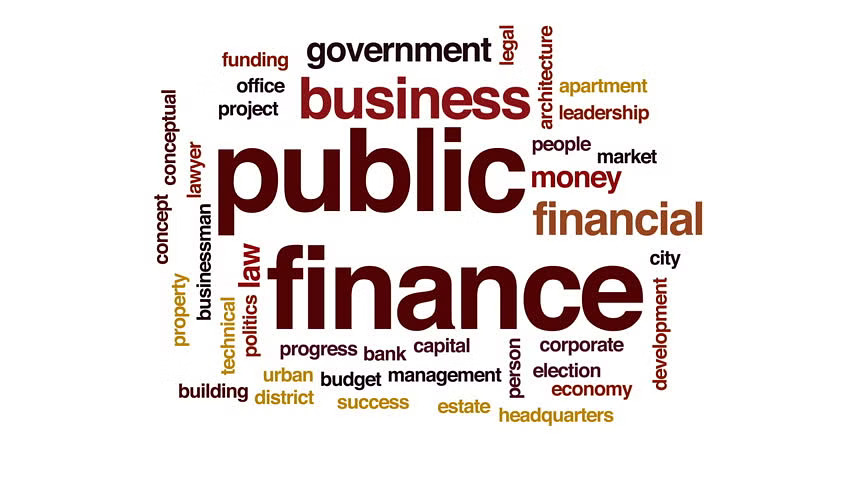Public finance is a critical area within economics that deals with the role of the government in the economy. It encompasses the revenue and expenditure activities of government entities and their impact on the overall economy. This field analyzes how governments raise funds through taxation, borrowing, and other means, and how these funds are allocated to various public services and projects. Understanding public finance is essential for comprehending the economic decisions that affect society’s well-being and the efficiency of resource allocation.
Key Components of Public Finance
Government Revenue
Government revenue refers to the funds that governments collect to finance their activities. The primary sources of revenue include:
- Taxes: This is the most significant source of revenue for most governments. Taxes can be classified into direct taxes, such as income tax and corporate tax, and indirect taxes, such as sales tax and value-added tax (VAT).
- Non-tax Revenue: This includes revenues from government-owned enterprises, fees and fines, and proceeds from the sale of public assets.
- Borrowing: Governments may issue bonds or take loans to finance deficits, leading to public debt.
- Grants and Aid: Funds received from other governments or international organizations.
Government Expenditure
Government expenditure is the spending of government funds on various services and projects. The key areas include:
- Public Goods and Services: Governments provide essential services such as defense, education, healthcare, and infrastructure.
- Welfare Programs: These include social security, unemployment benefits, and other social safety nets aimed at supporting vulnerable populations.
- Interest Payments: Payments on the government’s outstanding debt.
- Subsidies: Financial assistance to support specific industries or economic activities.
Fiscal Policy
Fiscal policy refers to the use of government spending and taxation to influence the economy. It aims to manage economic fluctuations, achieve macroeconomic objectives such as full employment, and control inflation. There are two primary types of fiscal policy:
- Expansionary Fiscal Policy: Involves increasing government spending or decreasing taxes to stimulate economic growth.
- Contractionary Fiscal Policy: Involves reducing government spending or increasing taxes to cool down an overheating economy.
Budget Deficit and Surplus
A budget deficit occurs when government expenditures exceed revenue, necessitating borrowing to cover the shortfall. Conversely, a budget surplus happens when revenue exceeds expenditures. Persistent budget deficits can lead to high levels of public debt, which may have long-term economic implications.
Public Debt
Public debt is the total amount owed by the government to creditors. It can be classified into:
- Domestic Debt: Borrowing from within the country.
- External Debt: Borrowing from foreign lenders.
Managing public debt is crucial as excessive debt can lead to higher interest rates, reduced investment, and potential default risks.
Objectives of Public Finance
Public finance aims to achieve several key objectives that ensure the economic stability and prosperity of a nation. These objectives include:
- Economic Stability: To stabilize the economy by managing inflation, reducing unemployment, and smoothing out economic cycles through fiscal policies.
- Efficient Resource Allocation: To allocate resources optimally, ensuring that funds are directed towards sectors that promote economic growth and public welfare.
- Provision of Public Goods and Services: To fund and provide essential public goods and services such as defense, education, healthcare, and infrastructure that are not adequately supplied by the private sector.
- Income Redistribution: To reduce income inequality through progressive taxation and social welfare programs, ensuring a more equitable distribution of wealth.
- Economic Growth and Development: To stimulate economic growth and development by investing in infrastructure, education, technology, and other critical areas that drive long-term prosperity.
- Social Welfare: To enhance the quality of life for citizens by providing social safety nets, including unemployment benefits, pensions, and healthcare.
- Public Debt Management: To manage public debt effectively, ensuring that borrowing and debt levels remain sustainable and do not hinder future economic growth.
- Crisis Management: To provide funds for relief and recovery during economic crises, natural disasters, or other emergencies, ensuring a swift and effective response.
- Fiscal Discipline: To maintain fiscal discipline by controlling government spending and ensuring efficient use of public funds to avoid excessive deficits and debt.
- Promotion of Economic Equity: To promote economic equity by ensuring that public finance policies do not disproportionately benefit certain groups at the expense of others, fostering social harmony and stability.

Types of Public Finance
Public finance can be categorized into several types based on different criteria:
- Federal Finance: Refers to the financial activities of the central or federal government.
- State Finance: Deals with the financial matters of state or regional governments.
- Local Finance: Involves the financial operations of local governments, such as municipalities and counties.
- Development Finance: Focuses on financial policies and activities aimed at promoting economic development.
- Public Corporations Finance: Concerns the financial operations of government-owned corporations or enterprises.
- Public-Private Partnerships (PPPs): Financial arrangements where the public sector collaborates with the private sector to deliver public services or infrastructure.
Also read: Investment Strategies for Long-Term Wealth Creation
Nature of Public Finance
The nature of public finance can be understood through its distinct characteristics:
- Collective Decision-Making: Public finance involves decisions made collectively through political processes.
- Non-Excludability and Non-Rivalry: Public goods provided through public finance are non-excludable and non-rivalrous, meaning they are available to all without depletion from use.
- Compulsory Contribution: Taxes and other forms of revenue collection are compulsory for citizens and businesses.
- Redistributive Function: Public finance often aims to redistribute wealth to reduce inequality and provide social welfare.
- Economic Stabilization: It plays a key role in stabilizing the economy through fiscal policies.
- Public Accountability and Transparency: Public financial activities require accountability and transparency to ensure proper use of funds and public trust.
10 Importance of Public Finance
- Economic Stability: Public finance helps stabilize the economy by managing inflation, controlling recessions, and ensuring steady economic growth.
- Resource Allocation: It ensures optimal allocation of resources to sectors that need them most, enhancing overall economic efficiency.
- Provision of Public Goods: Public finance supports the provision of essential public goods and services that the private sector may not adequately supply.
- Income Redistribution: Through progressive taxation and social welfare programs, public finance helps reduce income inequality.
- Infrastructure Development: It funds critical infrastructure projects like roads, bridges, and public transportation, facilitating economic activities.
- Social Welfare: Public finance supports social security, healthcare, and education, improving the quality of life for citizens.
- Public Debt Management: Effective public finance strategies ensure that public debt remains sustainable and does not hinder economic growth.
- Crisis Management: During economic crises or natural disasters, public finance provides the necessary funds for relief and recovery efforts.
- Promotion of Economic Development: It facilitates investments in key areas such as technology, education, and innovation, driving long-term economic development.
- Public Accountability: Ensures that government activities are transparent and accountable, fostering public trust and efficient governance.
Challenges in Public Finance
Despite its importance, public finance faces several challenges:
- Fiscal Deficits and Debt: Managing deficits and debt is a constant challenge, especially for developing countries or those facing economic crises.
- Tax Evasion and Avoidance: Ensuring compliance with tax laws is crucial for revenue generation but can be difficult to enforce.
- Political Pressures: Government spending decisions are often influenced by political considerations, which may not always align with economic efficiency.
- Globalization: The interconnectedness of the global economy can complicate fiscal policy, as economic shocks in one country can have far-reaching effects.
Conclusion
Public finance is a cornerstone of economic policy and management. It encompasses the complex interplay between government revenue and expenditure, fiscal policy, and public debt management. By understanding public finance, policymakers can make informed decisions that promote economic stability, efficient resource allocation, and equitable income distribution. As economies evolve, the principles and practices of public finance will continue to be critical in shaping the future of nations and their citizens’ well-being.
Source: Public Finance
Also read:
Income Tax Filing Law Updates 2024
